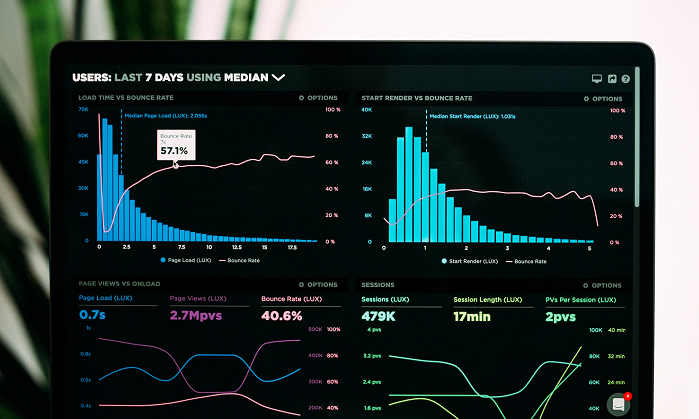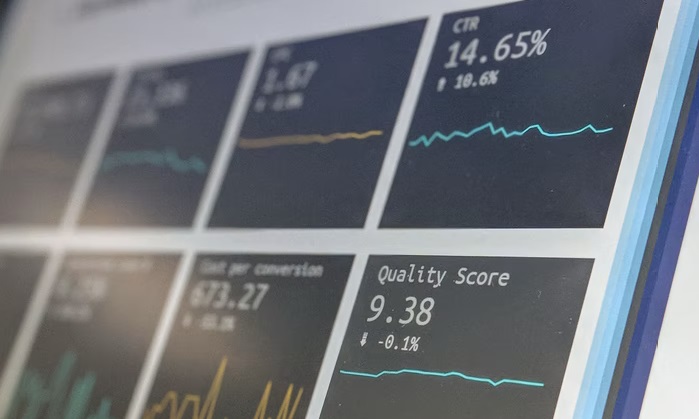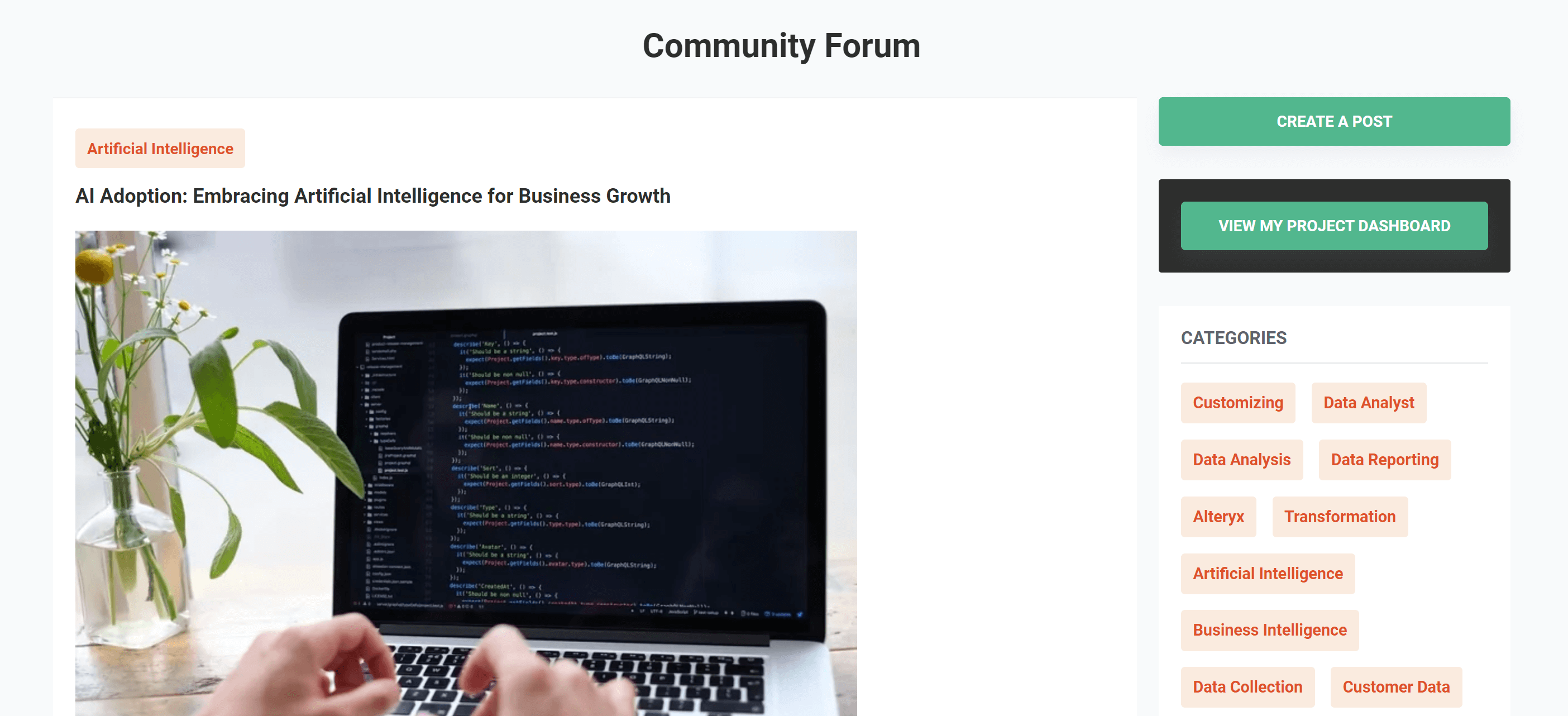Business Intelligence Analyst Vs Data Analyst: What’s the Difference?

Table of content
What is a Business Intelligence Analyst?
What Does a Data Analyst Do?
Overlapping Areas Between Business Intelligence Analysts and Data Analysts
Key Differences and Specializations Between BI Analysts and Data Analysts
Tools and Technologies
Importance of Data
Conclusion
In today’s data-driven world, business intelligence (BI) analysts and data analysts play vital roles in turning raw data into insights. BI analysts focus on transforming operational data into clear reports and dashboards that help businesses understand past performance. They provide decision-makers with a comprehensive view of “what has happened.”
In contrast, data analysts dig deeper to identify patterns and trends within the data, aiming to predict “what might happen.” While both roles involve working with data, BI analysts focus on past insights, while data analysts are more concerned with future predictions.
What is a Business Intelligence Analyst?
A Business Intelligence (BI) Analyst helps companies turn raw data into actionable insights that support strategic decision-making. Business intelligence involves collecting data from various sources, organizing it, and analyzing it to understand a company’s performance and future direction. BI analysts focus on creating reports and dashboards that provide clear snapshots of both internal operations, like sales and customer behavior, and external factors, such as market trends. These insights enable business leaders to make informed decisions based on historical performance and predictive analysis. For example, a BI analyst might help assess how price changes could impact customer signups or overall profitability.
In the past, BI analysts manually produced these reports, which was time-consuming and repetitive. Today, automation tools streamline the reporting process, allowing analysts to focus more on deeper analysis and delivering real-time insights. As businesses increasingly rely on data-driven strategies, the role of BI analysts has grown in importance, reflected in the competitive business intelligence analyst salary. Their ability to transform complex data into valuable business insights makes them essential for organizations looking to optimize operations and plan for the future.
What Does a Data Analyst Do?
A data analyst is responsible for collecting, cleaning, organizing, and analyzing large datasets to uncover patterns, trends, and insights that can inform decision-making across various industries, from business to healthcare, education, and government. Their role involves working with raw data, transforming it into a more structured format, and using statistical tools to identify meaningful information. While data analysts often work within a business context, their skills are widely applicable across many fields. They help organizations understand key factors such as customer behavior, market trends, or operational inefficiencies, allowing leaders to make data-driven decisions.
Although the work of data analysts overlaps with business intelligence, their focus is more on the technical and granular aspects of the analytics process rather than on high-level reporting. They may use tools to create dashboards and visualizations, but the core of their job lies in the detailed analysis of data to predict future outcomes or solve specific problems. As businesses increasingly rely on data to shape strategy, the demand for skilled analysts has grown, leading to a competitive data analyst salary. This makes data analytics a promising field for professionals who excel in working with numbers, databases, and statistical methods to drive meaningful change in an organization.
Overlapping Areas Between Business Intelligence Analysts and Data Analysts
At first glance, Business Intelligence Analysts and Data Analysts may seem to have overlapping responsibilities, and there are indeed several commonalities between the two roles. Both professions work with data to derive insights, use some of the same technologies, and require a strong understanding of data structures.
Common Responsibilities:
- Data extraction and cleaning.
- Visualizing data to help stakeholders make informed decisions.
- Use of similar tools like SQL, Tableau, and Excel.
- Collaboration with different business units to meet their data needs.
Shared Skills:
- Knowledge of SQL for querying databases.
- Familiarity with data visualization tools such as Tableau or Power BI.
- Understanding of data management and data integrity processes.
Key Differences and Specializations Between BI Analysts and Data Analysts
Despite some similarities, the roles of BI Analysts and Data Analysts differ significantly in their focus, goals, and approach.
| Aspect | Business Intelligence Analyst | Data Analyst |
| Focus | Business insights and trends using historical data. | Deep data mining and analysis to answer specific questions. |
| Goals | Provide a comprehensive overview of what is happening in the business. | Predict future trends and behaviours based on existing data. |
| Analysis Type | Descriptive analytics: What is happening? | Predictive analytics: Why is this happening? |
| Data Structure | Works with structured and pre-cleaned data. | Works with raw and unstructured data; data cleaning is required. |
| End Users | Business stakeholders, executives, and non-technical teams. | Analysts, managers, or specialized teams requiring deep insights. |
| Presentation | Simple, often visual dashboards and reports. | Complex, detailed reports with deep insights. |
| Tools | Power BI, Tableau, SQL. | Python, R, SQL, Excel. |
Despite some similarities, the roles of BI Analysts and Data Analysts differ significantly in their focus, goals, and approach.
Tools and Technologies
Both BI Analysts and Data Analysts rely on a robust set of tools and technologies to process and analyze data. However, the tools they emphasize can differ based on their respective tasks and goals.
Tools Used by Business Intelligence Analysts:
- Power BI: For creating interactive dashboards and visual reports.
- Tableau: A popular tool for data visualization that allows easy sharing of insights.
- SQL: To query data from large databases and data warehouses.
- Data Warehouses (e.g., Amazon Redshift, Google BigQuery): For managing structured data.
Tools Used by Data Analysts:
- Python: A versatile programming language used for data analysis and automation.
- R: A statistical programming language used for deep data mining and analysis.
- Excel: For organizing and performing preliminary data analysis.
- SQL: Like BI Analysts, Data Analysts use SQL to extract data from databases.
Common Technologies:
- ETL (Extract, Transform, Load) Processes: Both roles often interact with ETL pipelines, but BI Analysts typically work with pre-cleaned data, while Data Analysts may engage directly in data cleaning.
- Data Visualization Tools: Both rely on tools like Tableau and Power BI for presenting data, though Data Analysts may also use more complex tools like Matplotlib in Python.
Importance of data
Data is at the core of how businesses make informed decisions today, and both Business Intelligence (BI) Analysts and Data Analysts play essential roles in this process, though in different ways. BI Analysts focus on making data understandable and actionable for executives and non-technical teams. Their job is to provide a broad view of business performance by analyzing trends and patterns over time, often through reports and dashboards. This helps align various teams across the organization with shared goals and gives leaders the insights they need to make high-level strategic decisions.
In contrast, Data Analysts dive deep into the data to uncover specific, detailed insights. They’re tasked with answering precise questions, like why a particular product is underperforming or how customer behavior is shifting. Their work involves a more granular analysis, often requiring advanced statistical methods, to help optimize processes, improve products, and predict future trends. While BI Analysts provide a big-picture view, Data Analysts focus on the finer details, enabling businesses to make highly targeted, data-driven decisions.
Conclusion
In conclusion, both Business Intelligence Analysts and Data Analysts are essential to businesses looking to leverage data for growth and innovation. However, understanding the key differences between the two roles is critical when deciding which professional to hire.
If your company needs high-level business insights and trend tracking, a BI Analyst is the best fit. But if your goal is to investigate specific business questions and predict future outcomes, a Data Analyst will likely be more suited to the task. Both roles, though different, contribute to a company’s ability to make informed, data-driven decisions that drive success.
FAQ
1. What is the main difference between a BI Analyst and a Data Analyst?
A BI Analyst focuses on building dashboards and reporting systems to support business decisions. A Data Analyst extracts, cleans, and interprets data to uncover insights.
2. Which role is more technical: BI Analyst or Data Analyst?
Both require technical skills, but Data Analysts typically use more scripting (e.g., Python, R, SQL), while BI Analysts specialize in tools like Power BI, Tableau, or Looker.
3. What tools do BI Analysts use in 2025?
Popular BI tools include Power BI, Tableau, Looker, Qlik Sense, and Domo. Many also integrate with cloud data platforms like Snowflake and BigQuery.
4. Is BI Analyst a good career in 2025?
Yes. BI Analysts are in high demand across industries for their ability to deliver real-time insights and decision support through data visualization.
5. Can a Data Analyst become a BI Analyst?
Absolutely. With added skills in dashboarding and BI tools, a Data Analyst can easily transition into a BI Analyst role.
6. Do BI Analysts need to know coding?
Not always. Many BI tools are low-code, but having knowledge of SQL or DAX can significantly boost performance and job opportunities.
Get your data results fast and accelerate your business performance with the insights you need today.



